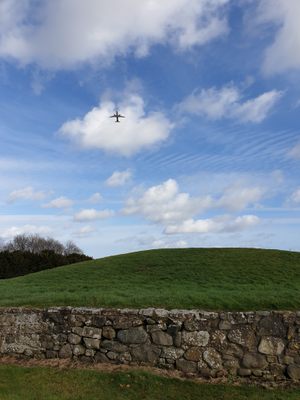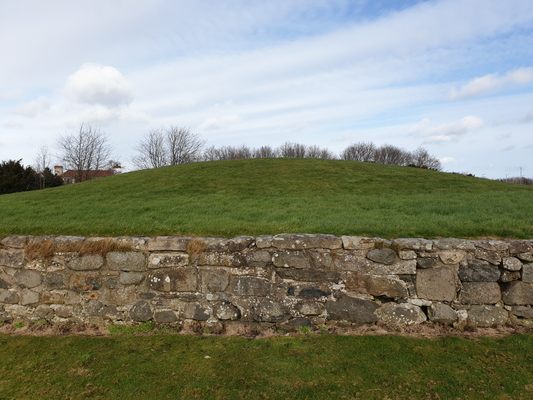About
Not far from Edinburgh's airport is this prehistoric site, which includes the remains of a cairn, along with standing stones. They have been dated to around the 25th century B.C., during the British Bronze Age. This makes the Huly Hill roughly contemporary with Stonehenge, but more recent than other sites, such as Skara Brae on Scotland's Orkney Islands.
Animal bones have been excavated from inside the cairn, although evidence of human burials has been found nearby. In particular, the site of a 2001 construction uncovered an Iron Age chariot burial, now known as the Newbridge chariot. The "hill," which is actually the remains of the cairn, was formerly known as Heely Hill. A total of four standing stones can be found not far from the cairn.
The positions of the three nearest stones suggest that there may have once been a stone circle surrounding the "hill." Huly would have been off-center within the circle, and the presence of a fourth stone also suggests that both parts of the site may have been in use at separate periods. Nowadays, the circular structure is easily appreciated by plane passengers flying overhead, considering that Huly Hill is practically at one of the ends of the airport's runway.
Related Tags
Know Before You Go
Because of advancements in modern technology, this ancient site is situated near a busy roundabout. There is a small parking lot at the end of Bridge street, or alternatively one could access the area reserved for Newbridge Bowling Club.
There are several bus lines that leave from Princes Street and Shandwick Place in Edinburgh. The journey takes 20 - 40 minutes. It is advised to use the white pedestrian land bridge over to the site to avoid the heavily congested round about. Lochend Road is the stop to disembark.
Flavors of Scotland: Beyond the Haggis
Smoked seafood, single malt whisky, and warm hospitality.
Book NowPublished
February 23, 2022











































